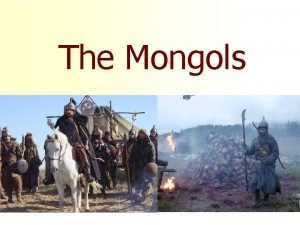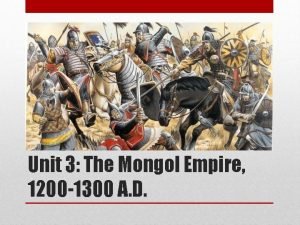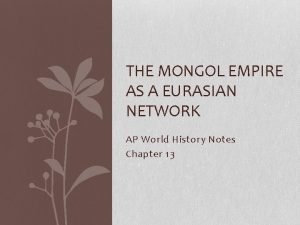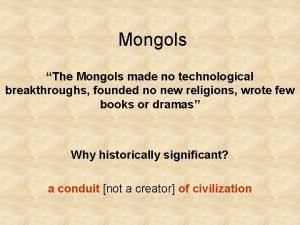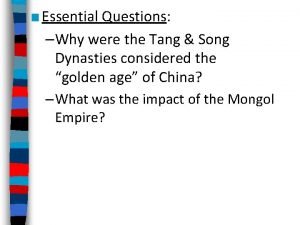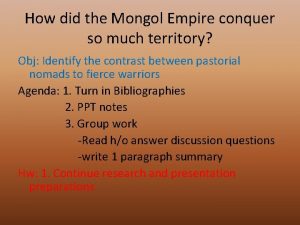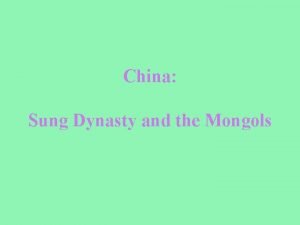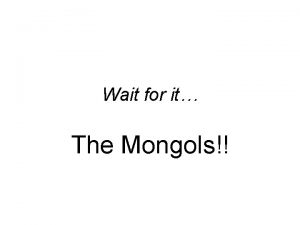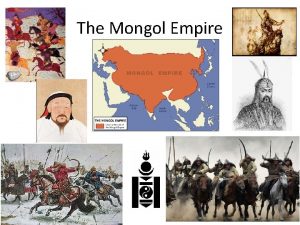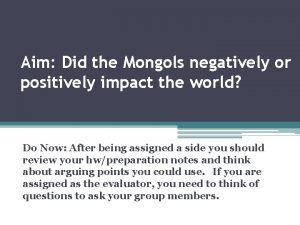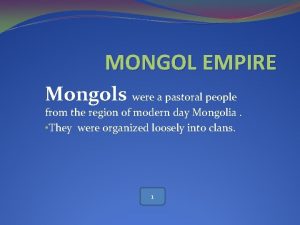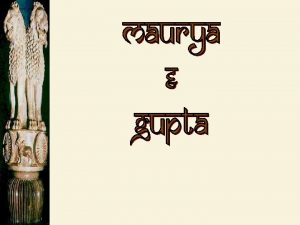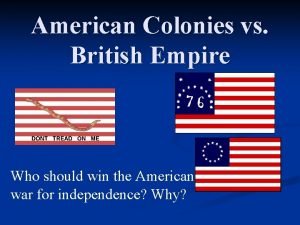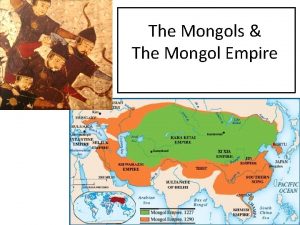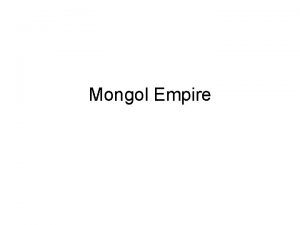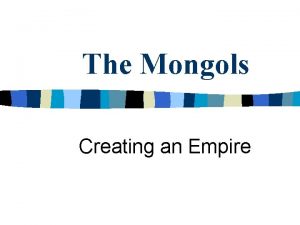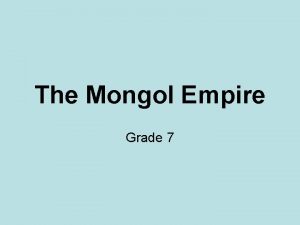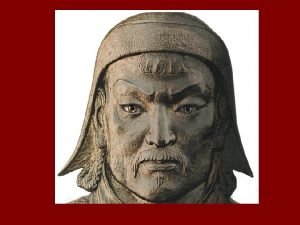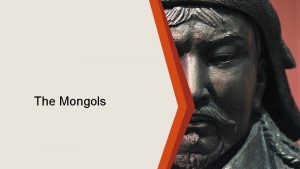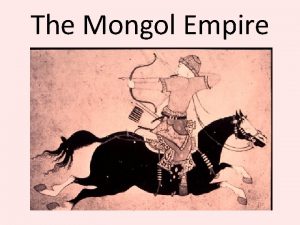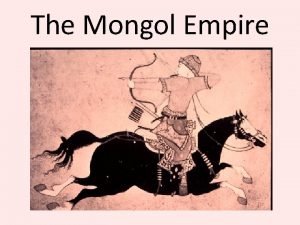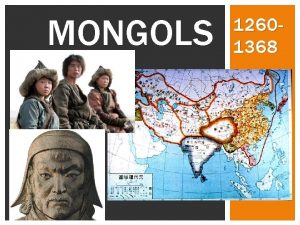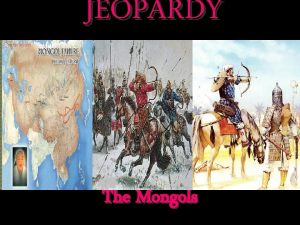MONGOL EMPIRE Mongols were a pastoral people from













- Slides: 13

MONGOL EMPIRE Mongols were a pastoral people from the region of modern day Mongolia. • They were organized loosely into clans. 1

Temujin – gradually unified the Mongols. 1206 the Mongols elected a leader named Temujin as the Genghis Khan “strong ruler”- he devoted himself to conquest. �He moved his troops into the quasi-Chinese Chinruled north China in 1211 and 1234 they destroyed the capital city. �Mongols brought much of the Eurasian landmass under a single rule, creating the largest land empire in history. �Mongol armies traveled both to the west and to the east. Some went as far as central Europe. 2

AFTER THE DEATH OF GENGHIS KHAN IN 1227 �The empire began to change. �The united Genghis Khan empire was divided into territories called KHANATES each under the rule. � 1231 – Mongols attacked Persia and then 1258 defeated the Abbasids at Baghdad 3

THE MONGOL DYNASTY IN CHINA �KUBLAI KHAN –(Genghis Khan’s grandson) completed the conquest of the Song and established a new Chinese dynasty, the Yuan. �He ruled China from 1279 -1294. �Established his capital at Khanbaliq (“the city of the Khan”) in northern China. Later the city would be known by Chinese name Beijing. 4

KUBLAI KHAN LEADERSHIP �Dynasty continued to expand the empire. �Conquered Vietnam. 5

GOVERNMENT �Adapted Chinese system of government. �He abolished the civil service exams �Established separate rules for the Mongols and for the Chinese. �Confucian principles. 6

THE RISE OF THE JAPANESE STATE �Japan is a chain of many islands. Land Area: approx. 146, 000 sq miles or 378, 000 sq km. �Main Islands: (a) Hokkaido (b) Honshu (c) Kyushu (d) Shikoku

Shotoku Taishi – the prince of the Yamato clan, tried to unify the various Japanese clans in order to more effectively resist an invasion by the Chinese.

Shotoku’s Accomplishments: �Created a centralized government under a supreme ruler; ruler portrayed as divine.

LEADERS OF EARLY ASIA Leader: Genghis Khan Place of Origin: Mongolia Accomplishment(s): 1. Brought entire Eurasian landmass under his control. 2. Created largest land empire in history.

Leader: Kublai Khan �Place of Origin: Mongolia �Accomplishment: � 1. established Khanbaliq, conquered the Song dynasty in China and invaded Vietnam temporarily and Java, Sumatra, and Japan unsuccessfully.

Leader: Shotoku Taishi �Place of Origin: Japan �Accomplishments: �Created centralized government under a supreme ruler; ruler portrayed as divine.

Leader: Minamoto Yoritomo �Place of Origin: Japan �Accomplishments: �Created shogunate and moved center of control to Tokyo.
 The mongol empire spans eurasia worksheet answer key
The mongol empire spans eurasia worksheet answer key The mongol empire spans eurasia worksheet answer key
The mongol empire spans eurasia worksheet answer key The mongol empire as a eurasian network
The mongol empire as a eurasian network Empire mongol apogée
Empire mongol apogée Mongol empire memes
Mongol empire memes The difference between empire and kingdom
The difference between empire and kingdom The mongol empire spans eurasia answer key
The mongol empire spans eurasia answer key Sung dynasty art
Sung dynasty art Who were the mongols
Who were the mongols Who were the mongols
Who were the mongols How did the mongols positively impact the world
How did the mongols positively impact the world Pastoral people from the region of modern day mongolia
Pastoral people from the region of modern day mongolia Mauryan empire and gupta empire venn diagram
Mauryan empire and gupta empire venn diagram American empire vs british empire
American empire vs british empire
